 |
 |
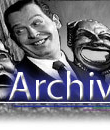 |
 |
 |
 |
 |
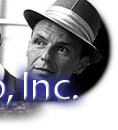 |
Click on the picture of your favorite celebrity to view more information. | |
 |
|||||||||
|
A MATCHLESS LIBRARY TELEVISION ARCHIVE |
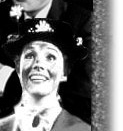 |
|
 |
|
 |
|
 |
|
 |
|
 |
|
 |
|
 |
|
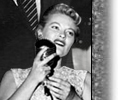 |
|
 |
|
 |
|
 |
|
 |
|
 |
|
 |
|
 |
|
 |
|
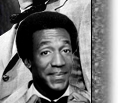 |
|
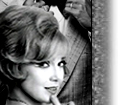 |
|
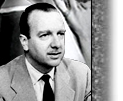 |
|
 |
|
 |
|
 |
|
 |
|
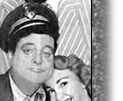 |
|
 |
|
 |
|
 |
|
 |
|
 |
|
 |
|
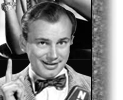 |
|
 |
|
 |
|
 |
|
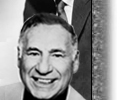 |
|
 |
|
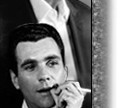 |
|
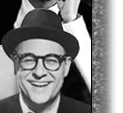 |
|
 |
|
 |
|
 |
|
 |
|
 |
|
 |
|
 |
|
 |
|
 |
|
 |
|
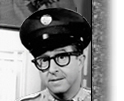 |
|
 |
|
 |
|
 |
|
 |
|
 |
|
 |
|
 |
|
 |
|
 |
|
 |
|
 |
|
 |
|
 |
|
 |
|
 |
|
 |
|
 |
|
 |
|
 |
|
 |
|
 |
|
 |
|
 |
|
 |
|
 |
|
 |
|
 |
|
 |
|
 |
|
 |
|
 |
|
 |
|
 |
|
 |
|
 |
|
 |
|
 |
|
 |
|
 |
|
 |
|
 |
|
 |
|
 |
|
 |
|
 |
|
 |
|
 |
|
 |
|
 |
|
 |
|
 |
|
 |
|
 |
|
 |
|
 |
|
 |
|
 |
|
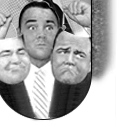 |
|
| Tributes | Talk | Events | News | Variety |
| Documentary | Music | Comedy | Juvenile | Awards |
| Biography | Sports | Productions | Others | Quiz |
| Specials |
|
582 Results found in Category All Pages: 1 [2] 3 4 5 6 7 8 9 10 11 12 |
|
#13446:
RADIO NEWS AND COMMENTARY WITH GABRIEL HEATTER
1960-06-16, Mutual, min. Nelson Rockefeller , Gabriel Heatter Gabriel Heatter was an American newscaster and journalist. During World War 11 he would begin his news broadcasts with the catchphrase "There's Good News Tonight." On this broadcast commentary on Nelson Rockefeller's chances of winning the Republican nomination. Host: Gabriel Heatter. |
|
#13445:
RADIO NEWS WITH FULTON LEWIS JR, THE
1960-06-16, Mutual, min. Dwight Eisenhower , Fulton Lewis Jr Fulton Lewis Jr was a conservative radio newscaster and journalist broadcasting on the Mutual Broadcasting System. Comments on successful leftist humiliation of Eisenhower in Tokyo, anti-US cartoons in Russia. |
|
#13458:
REMEMBER US
1960-07-18, WNEW, 53 min. Adolf Hitler , Steven Spielberg , Phil Gries , Quentin Reynolds , Dr. Gisela Perl , Sonia Weissman , Janus T. , Alain Resnais , Leo Weissman
1 Results found for Remember Us
Pages: [1]
#13458: REMEMBER US
1960-07-18, WNEW, 53 min.
Adolf Hitler, Steven Spielberg, Phil Gries, Quentin Reynolds, Dr. Gisela Perl, Sonia Weissman, Janus T., Alain Resnais, Leo Weissman
A one-hour special report. Jewish survivors of Nazi atrocities and concentration camp horrors relate their past experiences.
Quentin Reynolds is the host and narrator.
"Nothing will remain of the Jewish question but a cemetery," predicted a Nazi official when Hitler's program to eliminate the Jews began in earnest in 1938. Many hundreds of cemeteries were filled before Allied victory halted the Nazi machine in 1945. " REMEMBER US" tells the story of the millions of European Jews who died in prison camps and ghettos during this period, and of those who survived.
Past footage from Documentary films and the accounts of survivors are used to piece together a scenario of life and death as Typhus and starvation stalked the prisoners in the concentration camps, including Dachau, Breendonk, Auschwitz, and Buchenwald, and the ghettos of Europe. Survivors describe the resistance which met the Nazi decision to destroy the Warsaw ghetto in 1943, lengthy trips by cattle-car to extermination camps, capricious selection of gas chamber victims and the endless variety of tortures devised to bring about Hitler's "final solution to the Jewish question."
Broadcast on TV on July 18, 1960 the "Remember Us" documentary which includes fragments from Alain Resnais' classic 32 minute documentary "Night and Fog" (1956), opens with Dr. Gisela Perl, a survivor of the Holocaust...a Romanian Jewish Gynecologist deported to Auschwitz in 1944 where she attended hundreds of women as an inmate gynecologist without the bare necessities to perform her work, delegated by Josef Mengele. She relates her ordeal and the ordeal of others. Dr. Pearl is best known for her published book in 1948, "I Was A Doctor in Auschwitz." Other interviews are spoken by Sonia Weissman (the donor's wife and a survivor of the Warsaw Ghetto), Janus T (a survivor of the Warsaw Ghetto Uprising), and Mr. Friedman (a survivor of Treblinka). The film goes on to use various well-known pieces of footage that exists in the USHMM film and video collection, such as German newsreel footage, Nuremberg War Crimes Trials as well as other war crimes trials, Mogilev gas van footage, etc. The film also incorporates well-known still photographs. There are images (and montages) of equipment used for medical experimentation, for example, a gynecological examination chair. At the conclusion of the film, narrator Quentin Reynolds warns that the Holocaust must be remembered least it be repeated. He then goes on to use the example of apartheid in South Africa as a [contemporary] parallel.
This extraordinary documentary which aired only one time and repeated in the early morning hours, has been forgotten by the public for 60 years. It is not available anywhere except for an archived 16mm print donated as a gift by Leo Weissman to the US Holocaust Memorial Museum in 1999.
A Variety Review described the film this way.
"In the annals of TV there probably hasn't been a more gruesome documentary than 'Remember Us,' an hour-length
depiction of the Nazi horror which ravaged 9 ,000,000 lives and left an open sore on humanity's conscience. No better telling has caught the diabolic character of the Nazi regime than ‘Remember Us,' a title which echoes and re-echoes when matched against the past and present. It is not easy to view and listen; a terrible reminder for an unsettled world."
NOTE: It is interesting that 34 years later Steven Spielberg would initiate a six-year worldwide filming coordination, producing "Survivors of the Shoah Visual History Foundation Project," begun in 1994 with the objective to film/video tape and preserve first-person survivor testimonies and encourage their use in education.
In 1985, Phil Gries, founder and owner of Archival Television Audio, Inc. filmed a series of interviews with filmmaker Cluade Lanzmann which were televised each night for four consecutive nights after an installment of Lanzmann's nine-and-a-half-hour epic documentary SHOAH, broadcast on PBS in its entirety. Nine years later, in December of 1994, Gries worked on the documentary "Bringing the Holocaust Home," for the BBC. For many days Gries filmed inside the new United States Holocaust Museum, in Washington DC, which was closed to the public during filming sequences within the museum. This landmark institution opened its doors for the first time to the public the previous year (March 22, 1993). Half - a- year later Phil Gries was hired to film 15 interviews (July-September 1995)...65 hours of footage with holocaust survivors for the Spielberg Survivors of the Shoah project at the inception of Spielberg's visionary undertaking. Most of the sit-down interviews, conducted by social workers, averaged two hours long. Some of them lasted four hours long. It was ALWAYS an emotional experience for subject and all others involved in the filming.
Today, twenty-five years later,112,000 thousand hours (52,000 separate interviews) of interviews have been conducted around the world and are preserved in The Visual History Archive. The material is digitized, and fully searchable via indexed keywords, and hyperlinked to the minute at the USC SHOAH FOUNDATION in Southern California.
REMEMBER US (1960), in many respects one of the first of such documentary retrospectives of the horrors of the Holocaust, remains a most hard hitting and compelling reminder and retelling of the horrors of Adolf Hitler's "solution to the Jewish question."
|
|
#13460:
REPUBLICAN NATIONAL CONVENTION, THE
1960-07-25, , min. Richard M. Nixon , Herbert Hoover , Walter Judd The Republican National Convention opens in Chicago. Senator Walter Judd gives the keynote address. Interview with Richard M. Nixon. Nixon interplay with former President Herbert Hoover. Recording of roll call of the states and balloting for Presidential nominee, taken on July 27th. |
|
#9232:
REPUBLICAN CONVENTION: 1960, THE
1960-07-27, , min. Richard M. Nixon , Henry Cabot Lodge The 1960 Republican Convention from the International Amphitheatre in Chicago, Illinois. |
|
#13460A:
REPUBLICAN NATIONAL CONVENTION CONTINUED
1960-07-27, , min. Herbert Hoover , Richard Nixon Highlights: An interview with Richard Nixon, Nixon, and Herbert Hoover in a teta-tate, roll call of states, balloting for a presidential nominee. |
|
#4432:
ROBERT HERRIDGE THEATER
1960-09-15, WCBS, 27 min. Robert Herridge , Ahmad Jamal , The Ben Webster Sextet July 7, 1960-September 22, 1960 (SYNDICATED). Ten half-hour broadcasts which included eight dramatic plays adapted by producer and host Robert Herridge. Only two programs were devoted to music. "Jazz From 61" features pianist Ahmad Jamal and his trio, and the Ben Webster sextet. The sextet plays "Mop Mop," "Chelsea Bridge" and "C-Jam Blues." The trio offers "Darn That Dream" and two Jamal originals, "Excerpts From the Blues" and "Jim Loves Sue." |
|
#11318:
RICHARD NIXON VS.JOHN F. KENNEDY 1960 PRESIDENTIAL DEBATE
1960-09-26, CBS, min. John F. Kennedy , Richard M. Nixon Live coverage of the 1960 presidential debate between Senator John F. Kennedy and Vice-President Richard Nixon. Also included are the presidential debates of 10-07-1960, 10-13-1960, and 10-21-1960, all CBS-TV. Thus is the 1st television debate among presidential candidates. |
|
#13500:
RICHARD NIXON POLITICAL TALK
1960-10-17, , min. Henry Cabot Lodge , Richard Nixon Political talk from Ohio with Republican presidential candidate Richard M. Nixon. He is introduced by Ambassador Henry Cabot Lodge. |
|
#7371:
RICHARD M. NIXON: POLITICAL SPEECH
1960-11-02, KTLA, 00 min. Dwight D. Eisenhower , Richard M. Nixon , Nelson A. Rockerfeller , Henry Cabot Lodge Republican Presidential candidate Richard M. Nixon and Vice Presidential candidate Henry Cabot Lodge are joined by President Dwight D. Eisenhower and New York Governor Nelson A. Rockerfeller for a political rally at Roosevelt Field in Westbury, NY. |
|
#7370:
RICHARD M. NIXON: VICE PRESIDENTIAL POLITICAL SPEECH
1960-11-02, KTLA, 00 min. Richard M. Nixon Vice President Richard M. Nixon addresses a political rally in New York City, following a ticker tape parade up Broadway. |
|
#7373:
RICHARD M. NIXON: POLITICAL SPEECH
1960-11-03, KTLA, 00 min. Richard M. Nixon Republican Presidential candidate Richard M. Nixon addresses a rally for the upcoming November 8th Presidential election. |
|
#7374:
RICHARD M. NIXON: POLITICAL SPEECH
1960-11-07, KTLA, 00 min. Dwight D. Eisenhower , Richard M. Nixon , Henry Cabot Lodge Republican Presidential candidate Richard M. Nixon is joined by President Dwight D. Eisenhower and Vice Presidential candidate Henry Cabot Lodge in a final campaign speech before the next day's election. |
|
#52:
RED SKELTON TIMEX SPECIAL, THE
1960-11-30, WCBS, 35 min. Red Skelton , George Raft , William Demarest , Frank Sinatra , Dinah Shore , Bobby Rydell Red Skelton plays host to guests George Raft, Frank Sinatra, Dinah Shore, Bobby Rydell and William Demarest. |
|
#5417:
REMEMBER HOW GREAT
1961-02-09, WNBC, 52 min. Jack Benny , Andy Williams , Connie Francis , Juliet Prowse , Harry James , The McGuire Sisters Jack Benny hit radio in 1932. A lot of songs have come through the mill since then, and tonight Benny is host for a look-see at some of them. |
|
#10174:
RAGTIME ERA, THE: "ANY RAGS TODAY" (THE BIRTH OF THE BLUES)
1961-02-18, WOR, 28 min. Max Morath , Scott Joplin , John Stark , James Scoot February 11, 1961 - April 19, 1961
A 12-part series produced for the National Educational Television & Radio Center by KRMA-TV, Denver Colorado.
The Ragtime Era with host Max Morath, who at the age of 32 is the ideal spokesman. He holds forth at an elegant pianoforte, singing and playing in a lively, authentic style. He' a close student of the period when America's popular music developed, and he sparks the narrative segments with anecdote and erudition that is as bright as the music.
We hum ragtime tunes quite casually today, unaware, as Mr. Morath points out, that ragtime was once a national issue, and that the musicians’ union once passed a resolution censuring this type of music. Mr. Morath explains why ragtime was more than just another kind of tune. He tells of its origins and the men who first wrote it: Scott Joplin, the author of Maple Leaf Rag; John Stark, the first publisher of good ragtime music; James Scoot and others. He defines ragtime, syncopation, polyrhythm, and improvisation. He speaks of the player piano, the importance of the ragtime composer who wrote his music down, and the spread of ragtime across the nation by the end of the first decade of the twentieth century.
Episodes in this series cover American pop music from the 1890's to 1920. Included are broadcasts focusing on the Blues, Ragtime, Musical Comedy, Tin Pan Alley, the Mauve Decade, Those Singin' Songs, Movie Music, the Song Pluggers, Tempos of the Time, and the songs made popular during World War 1.
From radio to television to national fame as a performer, Max Morath became the recognized purveyor of music and popular culture of the ragtime era. That is the way most people remember Max Morath as “Mr. Ragtime.”
In 1959, his epic 12-episode TV series The Ragtime Era, was the first modern educational documentary at KRMA-TV in Denver that both entertained and informed. It ushered in a field now produced by modern documentarians like Ken Burns at Florentine Films. Max wrote, hosted, and performed each 30-minute episode live in one-take and followed that series with other TV projects.
He pioneered educational television with his producer Moss Hall and this series helped move the transition from National Educational Television (NET) to the Public Broadcasting System (PBS).
Archival Television Audio, Inc. has preserved in its archive ten of the twelve part series. Missing is the sixth broadcast in the series,"The Yankee Doodle Boy," and the ninth broadcast in the series, "Emancipation of Women: New Music of the 20's"
With “The Ragtime Era” National Educational Television brings viewers one of the most delightful, and at the same time informative series ever produced. But “The Ragtime Era” is more than a recreation of the music from 1890 to 1920. It is also a careful study of American social history between 1890 and 1920, a period which saw the beginning of the labor movement, modern technical achievements, feminism, the growing importance of Negroes and immigrants. It was a period of activity, unrest, gaiety and real distress. And, finally, “The Ragtime Era” provides the audience with some sound and at the same time uncomplicated, musical theory and analysis. To do all of this KRMA-TV, the Denver affiliate of NET, has drawn on the services of singer-pianist-musician Max Morath, who combines with his performances of ragtime classics a presentation of the pictures, stage sets, and other paraphernalia of “The Ragtime Era.”
Episodes:
Episode #1: The Mauve Decade
Episode #2: Any Rags Today
Episode #3: Lonesome Road
Episode #4: Those Real Singin’ Songs
Episode #5: More Music than Comedy
Episode #6: The Yankee Doodle Boy
Episode #7: Tin Pan Alley
Episode #8: Tin Pan Alley Also Ran
Episode #9: June, Moon, and Spoon (New Music of the '20s)
Episode #10: The Tempos of Our Time
Episode #11: Feet First
Episode #12: The Great War
|
|
#10175:
RAGTIME ERA, THE: "LONESOME ROAD" (THE BLUES)
1961-02-25, WOR, 28 min. Max Morath , Ernie Douglas , WC Handy February 11, 1961 - April 19, 1961
A 12-part series produced for the National Educational Television & Radio Center by KRMA-TV, Denver Colorado.
The Ragtime Era with host Max Morath, who at the age of 32 is the ideal spokesman. He holds forth at an elegant pianoforte, singing and playing in a lively, authentic style. He' a close student of the period when America's popular music developed, and he sparks the narrative segments with anecdote and erudition that is as bright as the music.
Mr. Morath’s subject for this program is the blues: their origin, their musical form, and the new rhythms involved. Combining musical analysis with some excellent performances by Ernie Douglas singing the blues, Mr. Morath presents a program of musical theory, history, and song. He talks about one of the fathers of the blues, WC Handy, and about the spread of the blues from Memphis to London, England. He gives a picture of music whose importance and popularity still continue, half a century later.
Episodes in this series cover American pop music from the 1890's to 1920. Included are broadcasts focusing on the Blues, Ragtime, Musical Comedy, Tin Pan Alley, the Mauve Decade, Those Singin' Songs, Movie Music, the Song Pluggers, Tempos of the Time, and the songs made popular during World War 1.
From radio to television to national fame as a performer, Max Morath became the recognized purveyor of music and popular culture of the ragtime era. That is the way most people remember Max Morath as “Mr. Ragtime.”
In 1959, his epic 12-episode TV series The Ragtime Era, was the first modern educational documentary at KRMA-TV in Denver that both entertained and informed. It ushered in a field now produced by modern documentarians like Ken Burns at Florentine Films. Max wrote, hosted, and performed each 30-minute episode live in one-take and followed that series with other TV projects.
He pioneered educational television with his producer Moss Hall and this series helped move the transition from National Educational Television (NET) to the Public Broadcasting System (PBS).
Archival Television Audio, Inc. has preserved in its archive ten of the twelve part series. Missing is the sixth broadcast in the series,"The Yankee Doodle Boy," and the ninth broadcast in the series, "Emancipation of Women: New Music of the 20's"
With “The Ragtime Era” National Educational Television brings viewers one of the most delightful, and at the same time informative series ever produced. But “The Ragtime Era” is more than a recreation of the music from 1890 to 1920. It is also a careful study of American social history between 1890 and 1920, a period which saw the beginning of the labor movement, modern technical achievements, feminism, the growing importance of Negroes and immigrants. It was a period of activity, unrest, gaiety and real distress. And, finally, “The Ragtime Era” provides the audience with some sound and at the same time uncomplicated, musical theory and analysis. To do all of this KRMA-TV, the Denver affiliate of NET, has drawn on the services of singer-pianist-musician Max Morath, who combines with his performances of ragtime classics a presentation of the pictures, stage sets, and other paraphernalia of “The Ragtime Era.”
Episodes:
Episode #1: The Mauve Decade
Episode #2: Any Rags Today
Episode #3: Lonesome Road
Episode #4: Those Real Singin’ Songs
Episode #5: More Music than Comedy
Episode #6: The Yankee Doodle Boy
Episode #7: Tin Pan Alley
Episode #8: Tin Pan Alley Also Ran
Episode #9: June, Moon, and Spoon
Episode #10: The Tempos of Our Time
Episode #11: Feet First
Episode #12: The Great War
|
|
#10176:
RAGTIME ERA, THE: "THE REAL SINGIN' SONGS"
1961-03-04, WOR, 28 min. Max Morath , Barbershop Quartet February 11, 1961 - April 19, 1961
A 12-part series produced for the National Educational Television & Radio Center by KRMA-TV, Denver Colorado.
The Ragtime Era with host Max Morath, who at the age of 32 is the ideal spokesman. He holds forth at an elegant pianoforte, singing and playing in a lively, authentic style. He' a close student of the period when America's popular music developed, and he sparks the narrative segments with anecdote and erudition that is as bright as the music.
Some songs stay alive despite any changes in taste or style, and a large number of the songs we’re singing now were written in the Ragtime Era. Mr. Morath sings many of them and describes why they have remained so popular for so long. The fact that they were written by musicians who were not professional song writers, the use of a simple pattern of notes, and the rhythms which made them easy to sing made these songs memorable. This program features not only Mr. Morath, but also a barbershop quartet.
Episodes in this series cover American pop music from the 1890's to 1920. Included are broadcasts focusing on the Blues, Ragtime, Musical Comedy, Tin Pan Alley, the Mauve Decade, Those Singin' Songs, Movie Music, the Song Pluggers, Tempos of the Time, and the songs made popular during World War 1.
From radio to television to national fame as a performer, Max Morath became the recognized purveyor of music and popular culture of the ragtime era. That is the way most people remember Max Morath as “Mr. Ragtime.”
In 1959, his epic 12-episode TV series The Ragtime Era, was the first modern educational documentary at KRMA-TV in Denver that both entertained and informed. It ushered in a field now produced by modern documentarians like Ken Burns at Florentine Films. Max wrote, hosted, and performed each 30-minute episode live in one-take and followed that series with other TV projects.
He pioneered educational television with his producer Moss Hall and this series helped move the transition from National Educational Television (NET) to the Public Broadcasting System (PBS).
Archival Television Audio, Inc. has preserved in its archive ten of the twelve part series. Missing is the sixth broadcast in the series,"The Yankee Doodle Boy," and the ninth broadcast in the series, "Emancipation of Women: New Music of the 20's"
With “The Ragtime Era” National Educational Television brings viewers one of the most delightful, and at the same time informative series ever produced. But “The Ragtime Era” is more than a recreation of the music from 1890 to 1920. It is also a careful study of American social history between 1890 and 1920, a period which saw the beginning of the labor movement, modern technical achievements, feminism, the growing importance of Negroes and immigrants. It was a period of activity, unrest, gaiety and real distress. And, finally, “The Ragtime Era” provides the audience with some sound and at the same time uncomplicated, musical theory and analysis. To do all of this KRMA-TV, the Denver affiliate of NET, has drawn on the services of singer-pianist-musician Max Morath, who combines with his performances of ragtime classics a presentation of the pictures, stage sets, and other paraphernalia of “The Ragtime Era.”
Episodes:
Episode #1: The Mauve Decade
Episode #2: Any Rags Today
Episode #3: Lonesome Road
Episode #4: Those Real Singin’ Songs
Episode #5: More Music than Comedy
Episode #6: The Yankee Doodle Boy
Episode #7: Tin Pan Alley
Episode #8: Tin Pan Alley Also Ran
Episode #9: June, Moon, and Spoon (New Music of the '20s)
Episode #10: The Tempos of Our Time
Episode #11: Feet First
Episode #12: The Great War
|
|
#10177:
RAGTIME ERA, THE: "MORE MUSIC THAN COMEDY"
1961-03-11, WOR, 28 min. Max Morath , George Gershwin , Cole Porter , ` Irving Berlin February 11, 1961 - April 19, 1961
A 12-part series produced for the National Educational Television & Radio Center by KRMA-TV, Denver Colorado.
The Ragtime Era with host Max Morath, who at the age of 32 is the ideal spokesman. He holds forth at an elegant pianoforte, singing and playing in a lively, authentic style. He' a close student of the period when America's popular music developed, and he sparks the narrative segments with anecdote and erudition that is as bright as the music.
Musical comedies broke away from the Viennese operetta in the Ragtime Era, and Mr. Morath spends this program telling about the ancestors of Naughty Marietta, and, later, Oklahoma! and Carousel. Jerome Kern, Irving Berlin, George Gershwin and Cole Porter gained their starts from the impetus of the musical comedies, vaudeville shows and extravaganzas of the Ragtime Era.
Episodes in this series cover American pop music from the 1890's to 1920. Included are broadcasts focusing on the Blues, Ragtime, Musical Comedy, Tin Pan Alley, the Mauve Decade, Those Singin' Songs, Movie Music, the Song Pluggers, Tempos of the Time, and the songs made popular during World War 1.
From radio to television to national fame as a performer, Max Morath became the recognized purveyor of music and popular culture of the ragtime era. That is the way most people remember Max Morath as “Mr. Ragtime.”
In 1959, his epic 12-episode TV series The Ragtime Era, was the first modern educational documentary at KRMA-TV in Denver that both entertained and informed. It ushered in a field now produced by modern documentarians like Ken Burns at Florentine Films. Max wrote, hosted, and performed each 30-minute episode live in one-take and followed that series with other TV projects.
He pioneered educational television with his producer Moss Hall and this series helped move the transition from National Educational Television (NET) to the Public Broadcasting System (PBS).
Archival Television Audio, Inc. has preserved in its archive ten of the twelve part series. Missing is the sixth broadcast in the series,"The Yankee Doodle Boy," and the ninth broadcast in the series, "Emancipation of Women: New Music of the 20's"
With “The Ragtime Era” National Educational Television brings viewers one of the most delightful, and at the same time informative series ever produced. But “The Ragtime Era” is more than a recreation of the music from 1890 to 1920. It is also a careful study of American social history between 1890 and 1920, a period which saw the beginning of the labor movement, modern technical achievements, feminism, the growing importance of Negroes and immigrants. It was a period of activity, unrest, gaiety and real distress. And, finally, “The Ragtime Era” provides the audience with some sound and at the same time uncomplicated, musical theory and analysis. To do all of this KRMA-TV, the Denver affiliate of NET, has drawn on the services of singer-pianist-musician Max Morath, who combines with his performances of ragtime classics a presentation of the pictures, stage sets, and other paraphernalia of “The Ragtime Era.”
Episodes:
Episode #1: The Mauve Decade
Episode #2: Any Rags Today
Episode #3: Lonesome Road
Episode #4: Those Real Singin’ Songs
Episode #5: More Music than Comedy
Episode #6: The Yankee Doodle Boy
Episode #7: Tin Pan Alley
Episode #8: Tin Pan Alley Also Ran
Episode #9: June, Moon, and Spoon (New Music of the '20s)
Episode #10: The Tempos of Our Time
Episode #11: Feet First
Episode #12: The Great War
|
|
#10178:
RAGTIME ERA, THE: "TIN PAN ALLEY"
1961-03-25, WOR, 28 min. Max Morath , Irving Berlin , Monroe Rosenfeld , Harry von Titzer February 11, 1961 - April 19, 1961
A 12-part series produced for the National Educational Television & Radio Center by KRMA-TV, Denver Colorado.
The Ragtime Era with host Max Morath, who at the age of 32 is the ideal spokesman. He holds forth at an elegant pianoforte, singing and playing in a lively, authentic style. He' a close student of the period when America's popular music developed, and he sparks the narrative segments with anecdote and erudition that is as bright as the music.
What is Tin Pan Alley? When did it get its start? Max Morath answers these and other questions in the course of an amazing and amusing program devoted to the music business. In the Ragtime Era. Do you realize that “A Bicycle Built for Two” was rejected by American music publishers, and only became popular after it was printed in England? Do you know who invented the phrase “Tin Pan Alley?” What do the names Rosenfeld, Von Tilzer, Berlin, or words like “nickelodeon,” “illustrated song,” or “coon song” mean to you? Did you know that popular music is one of the outstanding examples of the improvement in civil liberties over the past decade? Or that it was ragtime which brought everyday speech and slang into popular songs?
In this episode, Max Morath explains how Tin Pan Alley got its name; discusses the rise of the popular song in America; explains the idea of the “Illustrated Song” as an advertising technique for selling songs; discusses the dangers of stereotypes and racism in song and plays a “coon song” from the Rag Time Era; explains the meaning of copyright and gives a brief history on the invention of the gramophone.
Episodes in this series cover American pop music from the 1890's to 1920. Included are broadcasts focusing on the Blues, Ragtime, Musical Comedy, Tin Pan Alley, the Mauve Decade, Those Singin' Songs, Movie Music, the Song Pluggers, Tempos of the Time, and the songs made popular during World War 1.
From radio to television to national fame as a performer, Max Morath became the recognized purveyor of music and popular culture of the ragtime era. That is the way most people remember Max Morath as “Mr. Ragtime.”
In 1959, his epic 12-episode TV series The Ragtime Era, was the first modern educational documentary at KRMA-TV in Denver that both entertained and informed. It ushered in a field now produced by modern documentarians like Ken Burns at Florentine Films. Max wrote, hosted, and performed each 30-minute episode live in one-take and followed that series with other TV projects.
He pioneered educational television with his producer Moss Hall and this series helped move the transition from National Educational Television (NET) to the Public Broadcasting System (PBS).
Archival Television Audio, Inc. has preserved in its archive ten of the twelve part series. Missing is the sixth broadcast in the series,"The Yankee Doodle Boy," and the ninth broadcast in the series, "Emancipation of Women: New Music of the 20's"
With “The Ragtime Era” National Educational Television brings viewers one of the most delightful, and at the same time informative series ever produced. But “The Ragtime Era” is more than a recreation of the music from 1890 to 1920. It is also a careful study of American social history between 1890 and 1920, a period which saw the beginning of the labor movement, modern technical achievements, feminism, the growing importance of Negroes and immigrants. It was a period of activity, unrest, gaiety and real distress. And, finally, “The Ragtime Era” provides the audience with some sound and at the same time uncomplicated, musical theory and analysis. To do all of this KRMA-TV, the Denver affiliate of NET, has drawn on the services of singer-pianist-musician Max Morath, who combines with his performances of ragtime classics a presentation of the pictures, stage sets, and other paraphernalia of “The Ragtime Era.”
Episodes:
Episode #1: The Mauve Decade
Episode #2: Any Rags Today
Episode #3: Lonesome Road
Episode #4: Those Real Singin’ Songs
Episode #5: More Music than Comedy
Episode #6: The Yankee Doodle Boy
Episode #7: Tin Pan Alley
Episode #8: Tin Pan Alley Also Ran
Episode #9: June, Moon, and Spoon
Episode #10: The Tempos of Our Time
Episode #11: Feet First
Episode #12: The Great War
|
|
#10179:
RAGTIME ERA, THE: "TIN PAN ALLEY ALSO RAN" (THE SONG PLUGER)
1961-04-11, WOR, 28 min. Max Morath February 11, 1961 - April 19, 1961
A 12-part series produced for the National Educational Television & Radio Center by KRMA-TV, Denver Colorado.
The Ragtime Era with host Max Morath, who at the age of 32 is the ideal spokesman. He holds forth at an elegant pianoforte, singing and playing in a lively, authentic style. He' a close student of the period when America's popular music developed, and he sparks the narrative segments with anecdote and erudition that is as bright as the music.
Continuing with his anecdotes and analysis of Tin Pan Alley, Mr. Morath tells about the songs which no one remembers today – how they were chosen, what made theme popular, and why they were forgotten. He tells about the song-plugger, the growth of movies and the illustrated song, the development and decline of the sheet music business, and the importance of new kinds of music and novel ideas. He also speaks about the fascinating and feverish world behind the scenes of the popular music arena of the early 1900s.
Episodes in this series cover American pop music from the 1890's to 1920. Included are broadcasts focusing on the Blues, Ragtime, Musical Comedy, Tin Pan Alley, the Mauve Decade, Those Singin' Songs, Movie Music, the Song Pluggers, Tempos of the Time, and the songs made popular during World War 1.
From radio to television to national fame as a performer, Max Morath became the recognized purveyor of music and popular culture of the ragtime era. That is the way most people remember Max Morath as “Mr. Ragtime.”
In 1959, his epic 12-episode TV series The Ragtime Era, was the first modern educational documentary at KRMA-TV in Denver that both entertained and informed. It ushered in a field now produced by modern documentarians like Ken Burns at Florentine Films. Max wrote, hosted, and performed each 30-minute episode live in one-take and followed that series with other TV projects.
He pioneered educational television with his producer Moss Hall and this series helped move the transition from National Educational Television (NET) to the Public Broadcasting System (PBS).
Archival Television Audio, Inc. has preserved in its archive ten of the twelve part series. Missing is the sixth broadcast in the series,"The Yankee Doodle Boy," and the ninth broadcast in the series, "Emancipation of Women: New Music of the 20's"
With “The Ragtime Era” National Educational Television brings viewers one of the most delightful, and at the same time informative series ever produced. But “The Ragtime Era” is more than a recreation of the music from 1890 to 1920. It is also a careful study of American social history between 1890 and 1920, a period which saw the beginning of the labor movement, modern technical achievements, feminism, the growing importance of Negroes and immigrants. It was a period of activity, unrest, gaiety and real distress. And, finally, “The Ragtime Era” provides the audience with some sound and at the same time uncomplicated, musical theory and analysis. To do all of this KRMA-TV, the Denver affiliate of NET, has drawn on the services of singer-pianist-musician Max Morath, who combines with his performances of ragtime classics a presentation of the pictures, stage sets, and other paraphernalia of “The Ragtime Era.”
Episodes:
Episode #1: The Mauve Decade
Episode #2: Any Rags Today
Episode #3: Lonesome Road
Episode #4: Those Real Singin’ Songs
Episode #5: More Music than Comedy
Episode #6: The Yankee Doodle Boy
Episode #7: Tin Pan Alley
Episode #8: Tin Pan Alley Also Ran
Episode #9: June, Moon, and Spoon
Episode #10: The Tempos of Our Time
Episode #11: Feet First
Episode #12: The Great War
|
|
#10180:
RAGTIME ERA, THE: "TEMPOS OF OUR TIME"
1961-04-15, WOR, 28 min. Max Morath February 11, 1961 - April 19, 1961
A 12-part series produced for the National Educational Television & Radio Center by KRMA-TV, Denver Colorado.
The Ragtime Era with host Max Morath, who at the age of 32 is the ideal spokesman. He holds forth at an elegant pianoforte, singing and playing in a lively, authentic style. He' a close student of the period when America's popular music developed, and he sparks the narrative segments with anecdote and erudition that is as bright as the music.
“A tune needs a rhythmic pattern – unless you’re singing in the bathtub. How else will you know when to tape your feet?” So asks Mr. Morath at the beginning of this program. He spends the rest of the half hour explaining all the different rhythmic patterns used in ragtime music. Using delightful examples and the rhythm section of a band to illustrate his points, he distinguishes between 2/4, ¾ and 6/8 time, between largo, allegretto, and other tempos, and he shows how the rhythm of a song can change its whole feeling. The foot-tapping part of a song is just as important as the words or the harmonies, and this program explores how the foot-tapping part is composed.
Continuing with his anecdotes and analysis of Tin Pan Alley, Mr. Morath tells about the songs which no one remembers today – how they were chosen, what made theme popular, and why they were forgotten. He tells about the song-plugger, the growth of movies and the illustrated song, the development and decline of the sheet music business, and the importance of new kinds of music and novel ideas. He also speaks about the fascinating and feverish world behind the scenes of the popular music arena of the early 1900s.
Episodes in this series cover American pop music from the 1890's to 1920. Included are broadcasts focusing on the Blues, Ragtime, Musical Comedy, Tin Pan Alley, the Mauve Decade, Those Singin' Songs, Movie Music, the Song Pluggers, Tempos of the Time, and the songs made popular during World War 1.
From radio to television to national fame as a performer, Max Morath became the recognized purveyor of music and popular culture of the ragtime era. That is the way most people remember Max Morath as “Mr. Ragtime.”
In 1959, his epic 12-episode TV series The Ragtime Era, was the first modern educational documentary at KRMA-TV in Denver that both entertained and informed. It ushered in a field now produced by modern documentarians like Ken Burns at Florentine Films. Max wrote, hosted, and performed each 30-minute episode live in one-take and followed that series with other TV projects.
He pioneered educational television with his producer Moss Hall and this series helped move the transition from National Educational Television (NET) to the Public Broadcasting System (PBS).
Archival Television Audio, Inc. has preserved in its archive ten of the twelve part series. Missing is the sixth broadcast in the series,"The Yankee Doodle Boy," and the ninth broadcast in the series, "Emancipation of Women: New Music of the 20's"
With “The Ragtime Era” National Educational Television brings viewers one of the most delightful, and at the same time informative series ever produced. But “The Ragtime Era” is more than a recreation of the music from 1890 to 1920. It is also a careful study of American social history between 1890 and 1920, a period which saw the beginning of the labor movement, modern technical achievements, feminism, the growing importance of Negroes and immigrants. It was a period of activity, unrest, gaiety and real distress. And, finally, “The Ragtime Era” provides the audience with some sound and at the same time uncomplicated, musical theory and analysis. To do all of this KRMA-TV, the Denver affiliate of NET, has drawn on the services of singer-pianist-musician Max Morath, who combines with his performances of ragtime classics a presentation of the pictures, stage sets, and other paraphernalia of “The Ragtime Era.”
Episodes:
Episode #1: The Mauve Decade
Episode #2: Any Rags Today
Episode #3: Lonesome Road
Episode #4: Those Real Singin’ Songs
Episode #5: More Music than Comedy
Episode #6: The Yankee Doodle Boy
Episode #7: Tin Pan Alley
Episode #8: Tin Pan Alley Also Ran
Episode #9: June, Moon, and Spoon
Episode #10: The Tempos of Our Time
Episode #11: Feet First
Episode #12: The Great War
|
|
#10181:
RAGTIME ERA, THE: "FEET FIRST"
1961-04-22, WOR, 28 min. Max Morath February 11, 1961 - April 19, 1961
A 12-part series produced for the National Educational Television & Radio Center by KRMA-TV, Denver Colorado.
The Ragtime Era with host Max Morath, who at the age of 32 is the ideal spokesman. He holds forth at an elegant pianoforte, singing and playing in a lively, authentic style. He' a close student of the period when America's popular music developed, and he sparks the narrative segments with anecdote and erudition that is as bright as the music.
This program deals largely with those years after 1911, when “America jumped, not headlong but feet first, into a dance mania,” as Max Morath puts it. How many people remember the “Grizzly Bear,” the “Kangaroo Dips,” the “Lama Duck,” or the most famous one of all, the “Turkey Trot?” Mr. Morath plays the music which sent ragtime America dance-crazy, and the steps themselves, complicated or simple, exhausting or romantic, are danced by the Cornick dance team. The progression form the strenuous and difficult waltzes and schottische, to the simpler, less exhausting two-steps, to finally, the more elaborate tangos; the growth of dance halls, tea dances, and, incidentally, cocktail parties; the dances left over from the Ragtime Era which we’re still dancing – these are the topics of this program.
Episodes in this series cover American pop music from the 1890's to 1920. Included are broadcasts focusing on the Blues, Ragtime, Musical Comedy, Tin Pan Alley, the Mauve Decade, Those Singin' Songs, Movie Music, the Song Pluggers, Tempos of the Time, and the songs made popular during World War 1.
From radio to television to national fame as a performer, Max Morath became the recognized purveyor of music and popular culture of the ragtime era. That is the way most people remember Max Morath as “Mr. Ragtime.”
In 1959, his epic 12-episode TV series The Ragtime Era, was the first modern educational documentary at KRMA-TV in Denver that both entertained and informed. It ushered in a field now produced by modern documentarians like Ken Burns at Florentine Films. Max wrote, hosted, and performed each 30-minute episode live in one-take and followed that series with other TV projects.
He pioneered educational television with his producer Moss Hall and this series helped move the transition from National Educational Television (NET) to the Public Broadcasting System (PBS).
Archival Television Audio, Inc. has preserved in its archive ten of the twelve part series. Missing is the sixth broadcast in the series,"The Yankee Doodle Boy," and the ninth broadcast in the series, "Emancipation of Women: New Music of the 20's"
With “The Ragtime Era” National Educational Television brings viewers one of the most delightful, and at the same time informative series ever produced. But “The Ragtime Era” is more than a recreation of the music from 1890 to 1920. It is also a careful study of American social history between 1890 and 1920, a period which saw the beginning of the labor movement, modern technical achievements, feminism, the growing importance of Negroes and immigrants. It was a period of activity, unrest, gaiety and real distress. And, finally, “The Ragtime Era” provides the audience with some sound and at the same time uncomplicated, musical theory and analysis. To do all of this KRMA-TV, the Denver affiliate of NET, has drawn on the services of singer-pianist-musician Max Morath, who combines with his performances of ragtime classics a presentation of the pictures, stage sets, and other paraphernalia of “The Ragtime Era.”
Episodes:
Episode #1: The Mauve Decade
Episode #2: Any Rags Today
Episode #3: Lonesome Road
Episode #4: Those Real Singin’ Songs
Episode #5: More Music than Comedy
Episode #6: The Yankee Doodle Boy
Episode #7: Tin Pan Alley
Episode #8: Tin Pan Alley Also Ran
Episode #9: June, Moon, and Spoon
Episode #10: The Tempos of Our Time
Episode #11: Feet First
Episode #12: The Great War
|
|
#10182:
RAGTIME ERA, THE: "THE GREAT WAR"
1961-04-29, WOR, 28 min. Max Morath February 11, 1961 - April 19, 1961
A 12-part series produced for the National Educational Television & Radio Center by KRMA-TV, Denver Colorado.
The Ragtime Era with host Max Morath, who at the age of 32 is the ideal spokesman. He holds forth at an elegant pianoforte, singing and playing in a lively, authentic style. He' a close student of the period when America's popular music developed, and he sparks the narrative segments with anecdote and erudition that is as bright as the music.
The Ragtime Era, says Max Morath, ended with the end of World War I. He devotes a large part of this final program to a description, in words and music, of America’s part before, during and after the war. Our unwillingness, and our unpreparedness, then our desperate efforts to arm and to persuade our people that it was right to arm, our soldiers’ views of the war, and our reactions to the end of the war – all these reflected in the songs of the period, the songs which put an end to the Ragtime Era
Episodes in this series cover American pop music from the 1890's to 1920. Included are broadcasts focusing on the Blues, Ragtime, Musical Comedy, Tin Pan Alley, the Mauve Decade, Those Singin' Songs, Movie Music, the Song Pluggers, Tempos of the Time, and the songs made popular during World War 1.
From radio to television to national fame as a performer, Max Morath became the recognized purveyor of music and popular culture of the ragtime era. That is the way most people remember Max Morath as “Mr. Ragtime.”
In 1959, his epic 12-episode TV series The Ragtime Era, was the first modern educational documentary at KRMA-TV in Denver that both entertained and informed. It ushered in a field now produced by modern documentarians like Ken Burns at Florentine Films. Max wrote, hosted, and performed each 30-minute episode live in one-take and followed that series with other TV projects.
He pioneered educational television with his producer Moss Hall and this series helped move the transition from National Educational Television (NET) to the Public Broadcasting System (PBS).
Archival Television Audio, Inc. has preserved in its archive ten of the twelve part series. Missing is the sixth broadcast in the series,"The Yankee Doodle Boy," and the ninth broadcast in the series, "Emancipation of Women: New Music of the 20's"
With “The Ragtime Era” National Educational Television brings viewers one of the most delightful, and at the same time informative series ever produced. But “The Ragtime Era” is more than a recreation of the music from 1890 to 1920. It is also a careful study of American social history between 1890 and 1920, a period which saw the beginning of the labor movement, modern technical achievements, feminism, the growing importance of Negroes and immigrants. It was a period of activity, unrest, gaiety and real distress. And, finally, “The Ragtime Era” provides the audience with some sound and at the same time uncomplicated, musical theory and analysis. To do all of this KRMA-TV, the Denver affiliate of NET, has drawn on the services of singer-pianist-musician Max Morath, who combines with his performances of ragtime classics a presentation of the pictures, stage sets, and other paraphernalia of “The Ragtime Era.”
Episodes:
Episode #1: The Mauve Decade
Episode #2: Any Rags Today
Episode #3: Lonesome Road
Episode #4: Those Real Singin’ Songs
Episode #5: More Music than Comedy
Episode #6: The Yankee Doodle Boy
Episode #7: Tin Pan Alley
Episode #8: Tin Pan Alley Also Ran
Episode #9: June, Moon, and Spoon
Episode #10: The Tempos of Our Time
Episode #11: Feet First
Episode #12: The Great War
|
|
#82:
RED SKELTON SHOW, THE
1961-06-13, WCBS, 26 min. Red Skelton , Jackie Coogan Red Skelton's guest is Jackie Coogan. |
|
#84:
RED SKELTON SHOW, THE
1961-06-20, WCBS, 26 min. Gene Autry , Red Skelton , Clem Kadiddlehopper , Champion Red Skelton plays Clem Kadiddlehopper, with Gene Autry's mount, Champion, guest starring. |
|
#6765A:
RICHARD MALTBY AND HIS ORCHESTRA FROM FREEDOMLAND
1961-09-17, CBS, 27 min. Richad Maltby A special broadcast on CBS Radio highlighting Richard Maltby and his orchestra from the Moonball in Freedomland Amusement Park. NOTE: Richard Maltby, American musician, conductor, arranger and bandleader was most notable for his 1956 recording, "The Man with the Golden Arm." His active years were during the 1930's - 1960's. |
|
#133B:
RED BARBER SHOW, THE
1961-10-01, WPIX, 6 min. Roger Maris , Ralph Houk , Red Barber , Johnny Sain Red Barber's post-game show which airs, following each New York Yankees televised game. On this show Barber and guest Roger Maris discuss Roger's historic 61st home run which he hit during today's game, breaking Babe Ruth's record. They both look at a video taped replay of the home run, and recount the moment. Contains opening, with theme music and Wheaties commercial. NOTE: ANOTHER EXAMPLE OF A LOST TELEVISION BROADCAST ORIGINALLY VIEWED AND LISTENED BY MILLIONS OF PEOPLE, AND ONLY PRESERVED AS A BROADCAST RECORD ON AUDIO TAPE. THE ONLY KNOWN AND PRESERVED ORIGINAL AUDIO AIR CHECK OF THIS HISTORIC EVENT. This peerless television audio air check of the WPIX TV Broadcast was audio taped, direct line, by Phil Gries, founder and owner of Archival Television Audio, Inc. A recording of this air check was given to Andy Strasberg who contacted me in 2020 while researching material for a book he was writing. He mentioned that for over fifty years searching for this holy grail broadcast of Roger Maris appearing on Red Barber's NY Yankee Post Game Show, right after hitting his historic 61st home run and viewing it for the first time on video tape playback and commenting, had alluded him. In his finished book "MY 1961," published by August Publications in 2021, the transcript of this peerless audio is greatly quoted verbatim by author Andy Strasberg on pages 257 through 270. |
|
#135:
ROGER MARIS: HOME RUN KING
1961-10-07, WPIX, 26 min. Roger Maris , Mel Allen , Phil Rizzuto , Babe Ruth Mel Allen is host. There is a review of Roger Maris' 61 home runs and the play-by-plays of his last eleven home runs are heard as they were announced live during Roger's quest for Babe Ruth's record. |
|
#144:
RED SKELTON SHOW, THE
1961-11-21, WCBS, 26 min. Red Skelton , Ed Wynn Ed Wynn guest stars. |
|
#13588:
REPORT FROM CAPE CANAVERAL
1962-01-27, , min. John Glenn John Glenn's orbital flight is postponed due to heavy overcast. |
|
#5413:
RAINBOW OF STARS
1962-04-17, WNBC, 52 min. Carol Lawrence , Robert Goulet , Al Hirt , Nancy Walker , The Rockettes , Dick Button , The Cathedral Boys' Choir of St. John The Divine Musical tour of Rockefeller Center with Robert Goulet as host. |
|
#203:
RED SKELTON SHOW, THE
1962-05-29, WCBS, 24 min. Red Skelton , Sebastian Cabot Sebastian Cabot guests. |
|
#210:
RED SKELTON SHOW, THE
1962-06-12, WCBS, 15 min. Red Skelton , Jackie Coogan , Mickey Rooney Mickey Rooney and Jackie Coogan guest star. |
|
#217:
RED SKELTON SHOW, THE
1962-06-19, WCBS, 26 min. Don Knotts , Red Skelton Don Knotts guest stars. |
|
#7357:
RED SKELTON HOUR, THE
1962-09-25, CBS, 00 min. Jack Benny , Red Skelton , Mahalia Jackson , Harpo Marx , Dyan Cannon , Modernaires , Billy Gray , Jimmy Cross September 25, 1962-June 23, 1970. One of television's most inventive and popular comedians, Red Skelton hosted his own series for twenty years, seven of them in a one-hour format, "The Red Skelton Hour" on CBS. Skelton began his television career on NBC September 30, 1951 with a half-hour filmed variety series lasting until June 21, 1953. He then began his CBS affiliation, and began hosting "The Red Skelton Show," a half-hour variety show broadcast live until October 18, 1960, and subsequently on videotape. This series aired from October 13, 1953, continuing until June 26, 1962. From July 21, 1954 through September 8, 1954, "The Red Skelton Revue" was broadcast live on CBS in a one-hour format. Red Skelton returned to NBC in a half-hour taped format for his final series. "Red" as the show was known, premiered September 14, 1970. The first four broadcasts included introductions by Vice President Spiro T. Agnew (September 14, 1970), Dean Martin (September 21, 1970), Jack Benny (September 28, 1970), and Johnny Carson (October 5, 1970) who got his big break writing for Skelton in the early 1950's. Red Skelton's last first-run regularly scheduled television program aired on March 15, 1971. This was the first hour-long Red Skelton broadcast on CBS. Series Premiere |
|
#7299:
RICHARD NIXON VS. EDMUND G. BROWN POLITICAL DEBATE
1962-10-01, KCBS, 00 min. Richard M. Nixon , Edmund G. Brown Former Vice President and Republican Gubernatorial candidate Richard M. Nixon debates the 1962 California Gubernatorial election with his Democratic opponent and current California Governor, Edmund G. (Pat) Brown. |
|
#7358:
RED SKELTON HOUR, THE
1962-10-09, CBS, 00 min. Red Skelton , Brenda Lee , Ray Bolger September 25, 1962-June 23, 1970. One of television's most inventive and popular comedians, Red Skelton hosted his own series for twenty years, seven of them in a one-hour format, "The Red Skelton Hour" on CBS. Skelton began his television career on NBC September 30, 1951 with a half-hour filmed variety series lasting until June 21, 1953. He then began his CBS affiliation, and began hosting "The Red Skelton Show," a half-hour variety show broadcast live until October 18, 1960, and subsequently on videotape. This series aired from October 13, 1953, continuing until June 26, 1962. From July 21, 1954 through September 8, 1954, "The Red Skelton Revue" was broadcast live on CBS in a one-hour format. Red Skelton returned to NBC in a half-hour taped format for his final series. "Red" as the show was known, premiered September 14, 1970. The first four broadcasts included introductions by Vice President Spiro T. Agnew (September 14, 1970), Dean Martin (September 21, 1970), Jack Benny (September 28, 1970), and Johnny Carson (October 5, 1970) who got his big break writing for Skelton in the early 1950's. Red Skelton's last first-run regularly scheduled television program aired on March 15, 1971.
|
|
#7359:
RED SKELTON HOUR, THE
1962-10-16, CBS, 00 min. Red Skelton , Kay Starr , Jackie Coogan September 25, 1962-June 23, 1970. One of television's most inventive and popular comedians, Red Skelton hosted his own series for twenty years, seven of them in a one-hour format, "The Red Skelton Hour" on CBS. Skelton began his television career on NBC September 30, 1951 with a half-hour filmed variety series lasting until June 21, 1953. He then began his CBS affiliation, and began hosting "The Red Skelton Show," a half-hour variety show broadcast live until October 18, 1960, and subsequently on videotape. This series aired from October 13, 1953, continuing until June 26, 1962. From July 21, 1954 through September 8, 1954, "The Red Skelton Revue" was broadcast live on CBS in a one-hour format. Red Skelton returned to NBC in a half-hour taped format for his final series. "Red" as the show was known, premiered September 14, 1970. The first four broadcasts included introductions by Vice President Spiro T. Agnew (September 14, 1970), Dean Martin (September 21, 1970), Jack Benny (September 28, 1970), and Johnny Carson (October 5, 1970) who got his big break writing for Skelton in the early 1950's. Red Skelton's last first-run regularly scheduled television program aired on March 15, 1971.
|
|
#7360:
RED SKELTON HOUR, THE
1962-10-30, CBS, 00 min. Red Skelton , Charlie Ruggles , Jane Powell , Jules Munchin September 25, 1962-June 23, 1970. One of television's most inventive and popular comedians, Red Skelton hosted his own series for twenty years, seven of them in a one-hour format, "The Red Skelton Hour" on CBS. Skelton began his television career on NBC September 30, 1951 with a half-hour filmed variety series lasting until June 21, 1953. He then began his CBS affiliation, and began hosting "The Red Skelton Show," a half-hour variety show broadcast live until October 18, 1960, and subsequently on videotape. This series aired from October 13, 1953, continuing until June 26, 1962. From July 21, 1954 through September 8, 1954, "The Red Skelton Revue" was broadcast live on CBS in a one-hour format. Red Skelton returned to NBC in a half-hour taped format for his final series. "Red" as the show was known, premiered September 14, 1970. The first four broadcasts included introductions by Vice President Spiro T. Agnew (September 14, 1970), Dean Martin (September 21, 1970), Jack Benny (September 28, 1970), and Johnny Carson (October 5, 1970) who got his big break writing for Skelton in the early 1950's. Red Skelton's last first-run regularly scheduled television program aired on March 15, 1971.
|
|
#13877:
ROY ROGERS AND DALE EVANS SHOW
1962-11-10, ABC, min. Roy Rogers , Dale Evans , Dale Robertson September 29th, 1962-December 22nd, 1963 (ABC) Roy Rogers and his wife, Dale Evans, cohosted this Saturday night variety hour. Cliff (Charlie Weaver) Arquette and Pat Brady, who was Roy Rogers and Dale Evans sidekick on the Roy Rogers western series, were also featured on the show. Guest on this episode is Dale Robertson, who joins in an "Instant Musical Western.". |
|
#13882:
RADIO HAVANA CUBA
1962-11-13, , min. Announcer From Radio Havana Cuba, commentary on "CIA-SABOTEUR" captured in Cuba, US should vacate Guantanamo Bay. |
|
#13881:
RADIO MOSCOW
1962-11-13, , min. Announcer Cuban's seize an CIA AGENT as a saboteur, Russian Mars probe deep in space will try to take photos. |
|
#7361:
RED SKELTON HOUR, THE
1962-11-20, CBS, 00 min. Red Skelton , Stubby Kaye , Janis Paige September 25, 1962-June 23, 1970. One of television's most inventive and popular comedians, Red Skelton hosted his own series for twenty years, seven of them in a one-hour format, "The Red Skelton Hour" on CBS. Skelton began his television career on NBC September 30, 1951 with a half-hour filmed variety series lasting until June 21, 1953. He then began his CBS affiliation, and began hosting "The Red Skelton Show," a half-hour variety show broadcast live until October 18, 1960, and subsequently on videotape. This series aired from October 13, 1953, continuing until June 26, 1962. From July 21, 1954 through September 8, 1954, "The Red Skelton Revue" was broadcast live on CBS in a one-hour format. Red Skelton returned to NBC in a half-hour taped format for his final series. "Red" as the show was known, premiered September 14, 1970. The first four broadcasts included introductions by Vice President Spiro T. Agnew (September 14, 1970), Dean Martin (September 21, 1970), Jack Benny (September 28, 1970), and Johnny Carson (October 5, 1970) who got his big break writing for Skelton in the early 1950's. Red Skelton's last first-run regularly scheduled television program aired on March 15, 1971. |
|
#7362:
RED SKELTON HOUR, THE
1962-12-04, WCBS, 00 min. Red Skelton , Audrey Meadows , Bobby Rydell September 25, 1962-June 23, 1970. One of television's most inventive and popular comedians, Red Skelton hosted his own series for twenty years, seven of them in a one-hour format, "The Red Skelton Hour" on CBS. Skelton began his television career on NBC September 30, 1951 with a half-hour filmed variety series lasting until June 21, 1953. He then began his CBS affiliation, and began hosting "The Red Skelton Show," a half-hour variety show broadcast live until October 18, 1960, and subsequently on videotape. This series aired from October 13, 1953, continuing until June 26, 1962. From July 21, 1954 through September 8, 1954, "The Red Skelton Revue" was broadcast live on CBS in a one-hour format. Red Skelton returned to NBC in a half-hour taped format for his final series. "Red" as the show was known, premiered September 14, 1970. The first four broadcasts included introductions by Vice President Spiro T. Agnew (September 14, 1970), Dean Martin (September 21, 1970), Jack Benny (September 28, 1970), and Johnny Carson (October 5, 1970) who got his big break writing for Skelton in the early 1950's. Red Skelton's last first-run regularly scheduled television program aired on March 15, 1971.
|
|
#7363:
RED SKELTON HOUR, THE
1962-12-18, CBS, 00 min. Red Skelton , Gordon MacRae , Sheila MacRae , Modernaires September 25, 1962-June 23, 1970. One of television's most inventive and popular comedians, Red Skelton hosted his own series for twenty years, seven of them in a one-hour format, "The Red Skelton Hour" on CBS. Skelton began his television career on NBC September 30, 1951 with a half-hour filmed variety series lasting until June 21, 1953. He then began his CBS affiliation, and began hosting "The Red Skelton Show," a half-hour variety show broadcast live until October 18, 1960, and subsequently on videotape. This series aired from October 13, 1953, continuing until June 26, 1962. From July 21, 1954 through September 8, 1954, "The Red Skelton Revue" was broadcast live on CBS in a one-hour format. Red Skelton returned to NBC in a half-hour taped format for his final series. "Red" as the show was known, premiered September 14, 1970. The first four broadcasts included introductions by Vice President Spiro T. Agnew (September 14, 1970), Dean Martin (September 21, 1970), Jack Benny (September 28, 1970), and Johnny Carson (October 5, 1970) who got his big break writing for Skelton in the early 1950's. Red Skelton's last first-run regularly scheduled television program aired on March 15, 1971.
|
|
#7364:
RED SKELTON HOUR, THE
1963-01-01, CBS, 00 min. Red Skelton , Martha Raye September 25, 1962-June 23, 1970. One of television's most inventive and popular comedians, Red Skelton hosted his own series for twenty years, seven of them in a one-hour format, "The Red Skelton Hour" on CBS. Skelton began his television career on NBC September 30, 1951 with a half-hour filmed variety series lasting until June 21, 1953. He then began his CBS affiliation, and began hosting "The Red Skelton Show," a half-hour variety show broadcast live until October 18, 1960, and subsequently on videotape. This series aired from October 13, 1953, continuing until June 26, 1962. From July 21, 1954 through September 8, 1954, "The Red Skelton Revue" was broadcast live on CBS in a one-hour format. Red Skelton returned to NBC in a half-hour taped format for his final series. "Red" as the show was known, premiered September 14, 1970. The first four broadcasts included introductions by Vice President Spiro T. Agnew (September 14, 1970), Dean Martin (September 21, 1970), Jack Benny (September 28, 1970), and Johnny Carson (October 5, 1970) who got his big break writing for Skelton in the early 1950's. Red Skelton's last first-run regularly scheduled television program aired on March 15, 1971.
An "Antony and Cleopatra" sketch is performed.
|
|
#367:
RED SKELTON HOUR, THE
1963-01-22, WCBS, 15 min. Red Skelton , Phil Harris , Alice Faye Red Skelton gives his opening monologue and appears in a sketch with guests Phil Harris and Alice Faye. |
|
#376:
RED SKELTON HOUR, THE
1963-01-29, WCBS, 33 min. Red Skelton , Mickey Rooney Mickey Rooney guests in a "Freddie the Freeloader" sketch entitled "Half a Lawyer is Better Than None." |
|
#7365:
RED SKELTON HOUR, THE
1963-01-29, CBS, 00 min. Red Skelton , Mickey Rooney , Paris Sisters Dupe Of Number 376. |
|
582 Results found in Category All Pages: 1 [2] 3 4 5 6 7 8 9 10 11 12 |
Top
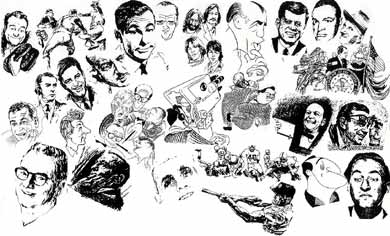
To search for a broadcast, please e nter a
Show Title, Personality, Airdate, Archive ID, Keyword or Phrase into the Search textboxes at the top of the page:
PRESERVING & ARCHIVING THE SOUND OF
LOST & UNOBTAINABLE ORIGINAL TV
(1946 - 1982)
"Preserving & disseminating important TV Audio
Air Checks, the video considered otherwise lost."
-Library of Congress
Vintage Television Audio Broadcasts
22,000 Titles - 20,000 Hours
Home | About us | Order Inquiry | TV Categories | Personality Index | Title Index
Archival Television Audio, Inc.
www.atvaudio.com
209 Sea Cliff Avenue
Sea Cliff, New York 11579
Attention: Phil Gries
|
Founder & Owner Phil Gries Director of Photography www.philgries.com |
"Any Inquiries"
Phone/Fax: (516) 656-5677
Email Us: gries@atvaudio.com
© 2002-2024 Collector's Choice Archival Television Audio, Inc.
All Rights Reserved.

Unique Visitors:
Visitor Counter
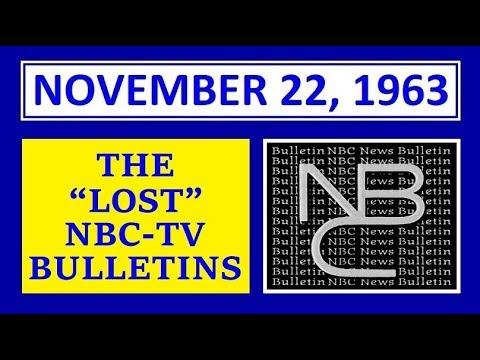
UNIQUE in the WORLD audio air check recordings by 20-year-old Phil Gries, archiving the first, second bulletins & initial NBC TV broadcast coverage of President John F. Kennedy's assassination. Not recorded by NBC or any other resource in the country.
- A&E TV SPECIAL - host Edwin Newman (11-22-1988) introduction - 25th Anniversary of JFK Assassination.
- NBC TV "Lost Don Pardo Bulletins" & Lost first 3:53 TV coverage (Phil Gries unique broadcast audio recording) unable to be video tape recorded or audio tape recorded by NBC.
- Phil Gries telephone interview with Don Pardo (5-14-1998).
- 10 minutes.
LIVE with PHIL GRIES
ARCHIVAL TELEVISION AUDIO - WEBINAR
Each Friday Evening from 7:30 - 8:30PM EST.
 RETRIEVABLE LOST MEMORIES
RETRIEVABLE LOST MEMORIESORDER
Vintage Television Audio Broadcasts
22,000 Titles
20,000 Hours
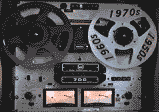
Testimonials
The Senior Moments Radio Broadcast show interviews Phil Gries about his Archival Television Audio archive and his restored documentary film, "Harlem School 1970"

Glen Cove Senior Center
January 23, 2018
 Phil Gries' recordings
Phil Gries' recordingsof vintage sounds
never grow old.

Hear Phil Gries on

Hear Phil Gries
and Joe Franklin
on Bloomberg Radio
(April 28, 2012)

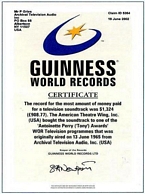
Home
Contact Us
ORDER INQUIRY
Hear Phil Gries on
National Public Radio
Archive Profile

ALL THINGS CONSIDERED
"Raising Ali"
(May 22, 2015)
Hear Phil Gries
on Sports Talk:
August 25, 2019
June 26, 2016
August 9, 2015




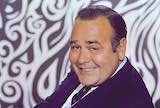
 Archive
ArchiveSearch Library
TV Categories
Personality Index
Title Index
ARSC Journal Article Publication: Lost TV Programs (1946-1972)

Hear Phil Gries presentations at ARSC (Association for Recorded Sound Collections) 2001, 2008, 2009, 2010, 2011, 2014.
Audio Samples

(Audio files may take 20 seconds or more to load)
1960's TV
Audio Player
103 Broadcast Samplers
AudioAndText™
Content
(Browser needs to
allow Flash content)
Content Collections
JFK Assassination
Coverage
NPR Walter Cronkite Essays
Civil Rights Movement (1956-1968)
Space Exploration (1956-1972)
Vietnam War
(1961-1975)
[854 Entries]
Company Information
About Us
Descriptions
Access
Fees
Archive
TIME-LINE
Accreditation
Master Materials
Research
Copyrights
Restricted Archive Titles
Catalogs
Related Materials
TV History
Lost Television
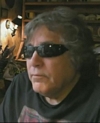
Jose Feliciano, at 70, listening to his FIRST TV variety show appearance (Al Hirt: FANFARE), telecast on July 17, 1965, when he was 19 years old.
TV Audio:
Rare & Valued
When TV Variety
Was King
This Anniversary Day
In Television History
ARSC/IASA London Conference: Why Collect?

News 12 Long Island
Live Television Profile:
Archival Television Audio, Inc
CAPTURED LIVE: CULTURES OF TELEVISION RECORDING AND STORAGE, 1945-1975

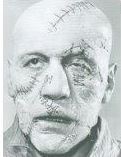
NBC MATINEE THEATER
FRANKENSTEIN
NBC TV - Feb. 5, 1957
8:23 min. excerpt
Phil Gries TV Audio Archive
Profile Segment
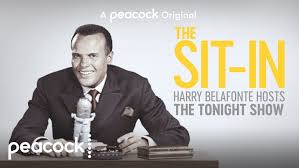
Harry Belafonte Hosts
The Tonight Show
5:21 min. excerpt
Password: Phil
(Case Sensitive)